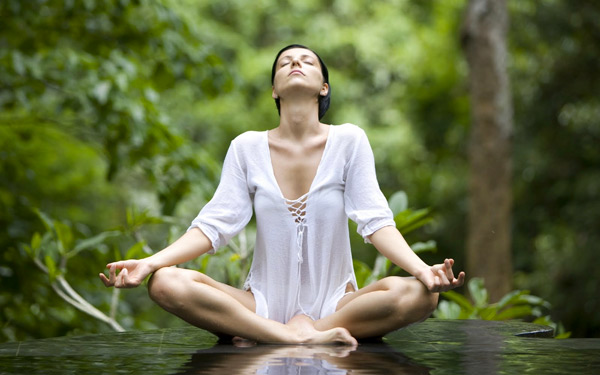
NIA
Debbie and Carlos Rosas, founders of Nia, are pioneers within the holistic fitness movement, who have always championed our rights to strive for wellness in mind, body, and spirit. Their training techniques incorporate a variety of movement styles including martial arts (e.g., Tae Kown Do and Aikido), dance forms (e.g., jazz and modern dance), yoga, somatics, and conscious breath work. They offered this advice in an earlier edition of Fitness: Theory & Practice.
“Because ‘holistic fitness’ is feeling-based, it can be very emotional for partic-ipants as they connect to various psychophysical parts of themselves. Often, these parts arise unexpectedly. Personalities, such as the child within, the adolescent, the adult, the warrior, the nurturer, the leader, the follower, and so forth, may surface. For many, this can be the first time they experience a new self, their own emotions and their power to act and make decisions based on what they feel and think. Go slowly and remain compassionate and loving throughout your process.” Read about their training programs at www.nianow.com.
Somatic Education
One of the major contributions to healing the classic mind/body split in the Western psyche is somatic education, a collection of sensory motor theories from leading thinkers in the field. Somatic education introduces participants to approaches such as authentic movement, focusing, the Lomi School, continuum, body/mind centering, process-oriented psychology, Gestalt therapy, sensory awareness, Hakorni, Rolfing, Feldenkrais work, and the various branches of Reichian psychotherapy. It interweaves these understandings with psychodynamic, Jungian, and other traditional perspectives.
Professor Don Hanlon Johnson has extended the early work of Thomas Hanna, the founder of somatic theory, with his graduate program in somatic psychotherapy at the California Institute of Integral Studies and publication of his book The Body in Psychotherapy: Inquiries in Somatic Psychology. Somatic approaches, such as authentic movement, allow raw emotions to shift and transform inner and outer selves. The body-mind is seen as a repository for every memory, emotion, and lived experience, and as such, effective movement instructors are essentially body-oriented therapists.
Not all Kumbaya
There has been a disconcerting criticism in the holistic fitness field, with one side aligned with exercise physiologists who value a more conventional form of exercise that is standardized, tested, and highly qualified to be disseminated to the masses. They have expressed concern that some holistic fitness classes are riddled with uncredentialed instructors who offer touchy-feely nonsense, a haphazard collection of unfounded claims. Sure, there may be some, but the fitness field is eclectic, diverse, and most of the time, well self-regulated by the industry itself. Ineffective or unsafe classes usually come under scrutiny and are quickly dropped by conscientious fitness directors.
While AFAA’s stance has always been a strong voice for the safest, most effective forms of exercise, backed by science, AFAA certified instructors and personal fitness trainers also understand that physical activity is to be promoted, and that at a certain point, barriers need to be decreased to attract the non-exerciser. Often innovation occurs at the margin, at places that take initial creative risks, and later those innovations are shaped to conform to respected, evidence-based limits. For over 25 years, the industry has watched the growth of holistic fitness move from a marginalized entry to a respected mainstream offering. It’s considered an advantage to cue class participants in the language of many yoga teachers, with rich imagery visualizations and relaxing music. Every class benefits when the instructor embodies a holistic health commitment, and encourages his or her participants to strive for personal and environmental well-being. Experiment with the techniques mentioned above and add a mind-body-spirit dimension to your classes. You’re sure to win many converts to holistic fitness.

Resources
Music
Just as music drives and motivates class participants in any group exercise, it is a critical component of holistic fitness classes. However, the selection must be carefully crafted to help participants maintain a state of psychological well being and physical freedom. There are mind/body music selections offered by many of the fitness industry vendors as well as downloadable online availability.
New Age
- Now We Are Free – Hans Zimmer from “Gladiator”
Tribal
- New Age – Sleepy Sun
- Dawn of a New Age- Dreamcatcher (album) Gabrielle Roth
- Gino d’auri
Jazz/Dance
- Artful Balance
High Energy
- Mickey Hart
- Bobby Mcferrin
Mellow
- Enigma
- The Mission soundtrack
Cool-down/Stretching
- Meditation – Best of New Age
Visualization
- Beyond Ordinary Nursing Academy of Guided Imagery
Holistic fitness is the conscious application of holistic health principles within group exercise classes, personal training, or any physical activity sessions. It is concerned with the health and well-being of the whole person-mind, body, spirit, and environment in dynamic balance and interdependence. It emphasizes and seeks to enhance the inherent healing ability of each individual and empowers people through teaching principles and skills that enable them to take greater responsibility for their personal development, healing, and health maintenance. Holistic fitness can enrich your life and keep the pleasure principle firmly within the fit life.
Women Fitness hope that the above resource on Holistic Fitness provides our readers a deep insight into importance about their mental fitness apart from physical well being.
Disclaimer
The Content is not intended to be a substitute for professional medical advice, diagnosis, or treatment. Always seek the advice of your physician or other qualified health provider with any questions you may have regarding a medical condition.